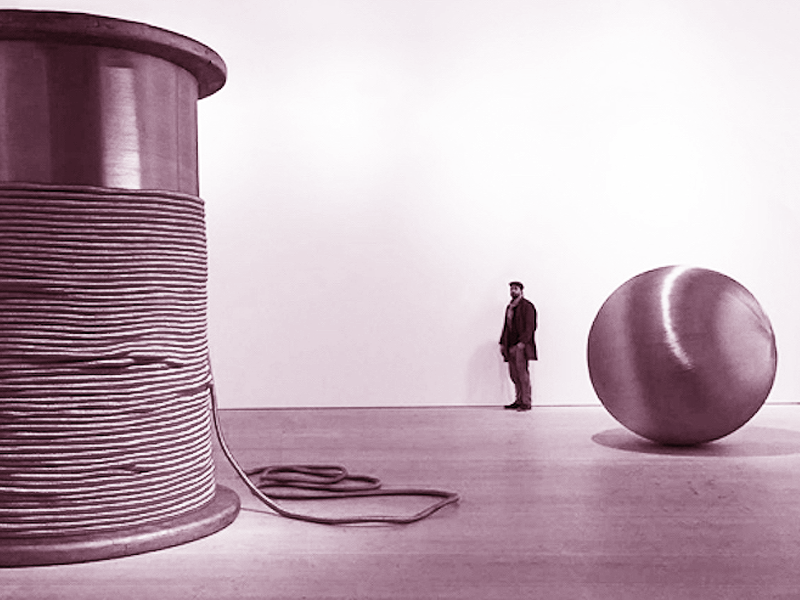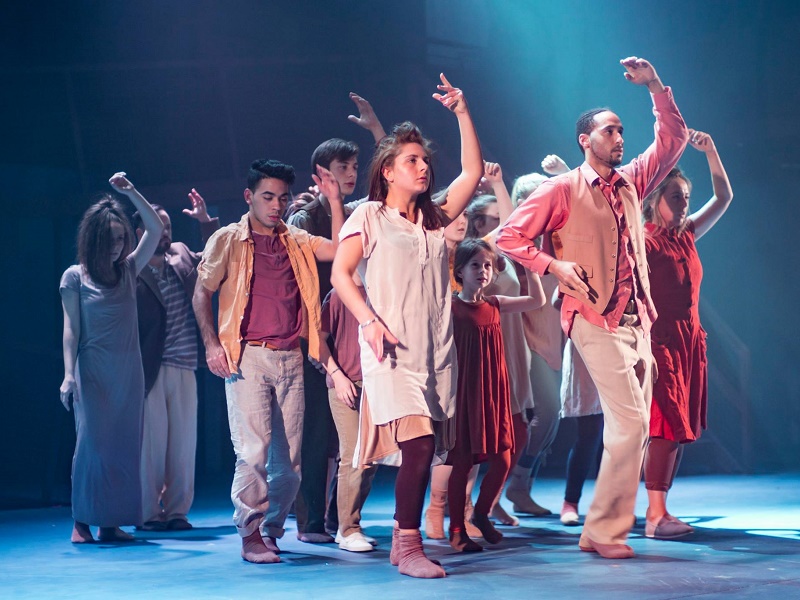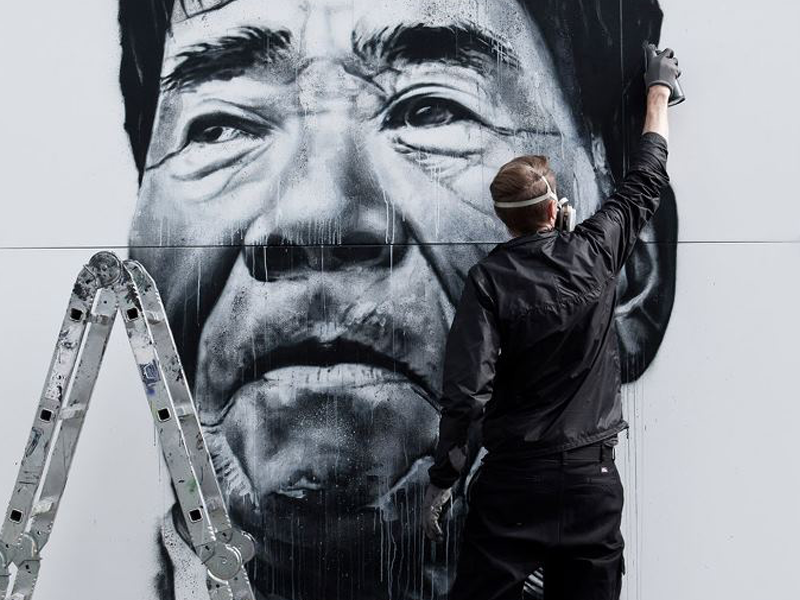
Cultural Networks: How Can the Cultural Sector Make it in International Projects?
Contrary to the stereotype of its conservatism, with each passing year Ukrainian culture is increasingly integrating into the international cultural context: project managers are joining international professional alliances, forming new partnerships, and implementing creative ideas in collaboration with participants from other countries. After Ukraine officially joined the Creative Europe grant programme in 2015, the cultural sector now has the possibility of working more closely with European peers and obtaining financial support from the EU, ranging from EUR 200,000 up to 2 million for individual projects. We have asked the heads of Creative Europe Desks and cultural managers from the Czech Republic, Slovakia, Slovenia and Croatia to share their experience and, on the basis of their tips, we have compiled a guide to participating in the programme.
1. WHO SHOULD APPLY TO CREATIVE EUROPE AND WHY?
Cultural and creative organisations with legal status for two years can apply to the programme. More information about the programme’s requirements is available online.
Cultural managers without previous experience in taking part in such projects often have unwarranted fears. “People feel that the programme is only for big organisations with a large staff,” says Mateja Lazar head of Creative Europe Desk Slovenia. “Of course, that’s not the case.” Most Slovenian organisations that have obtained support from the programme are NGOs without permanent staff and with small budgets. “This goes to show that even small organisations can cope perfectly well and obtain funding,” adds Lazar. “You can obtain funding only after your second or third attempt, but during this time you would have established partnerships and honed your project.”
Eva Zakova, head of Creative Europe Desk Czech Republic, singles out the possibility of cooperation and future growth as the programme’s main value. “It’s not only about money, but also about finding partners and establishing contact with organisations from different countries. This offers the opportunity of exchanging experience and knowledge, becoming more competent and constantly growing professionally.”
2. WHAT DO YOU NEED TO KNOW AND DO?
It is, first and foremost, important to understand that Creative Europe involves cooperation with many partners internationally. This has to do with content, money, time and other resources. Eva Zakova recommends starting with the project plan. “What is necessary is a clear understanding of what you want to do, the vision for the project and its target audience. Strong managerial skills possessed by the participants are also important: it’s necessary to be good at marketing, project management, working with the financial aspect and with a large number of partners.”
Zora Jaurova, a cultural expert and producer from Slovakia and head of Creative Industry Forum, notes the importance of good language and communication skills. Cultural project managers will also need confidence in their abilities to manage international projects. They have to be ready for surprises and not turn down opportunities.
3. WHAT IS THE STARTING POINT?
1. Create a network of contacts: Be proactive and try to get into professional circles, and take part in international events. This is an excellent opportunity to meet potential partners. Eva Zakova advises cultural operators to monitor the activities of their peers from other countries, and when possible to meet with them and start cooperating. An example of the effectiveness of such an approach is the large-scale Czech scenography project Prague Quadrennial. “At first, they shied away from approaching such world-renowned institutions like the Tate or the Victoria and Albert Museum,” says Zakova. “But everything worked out, because the partners found the project to be very interesting. Don’t be afraid of approaching people and organisations, even if it seems that you’re not in their league.”
2. Travel: Make use of any opportunity to see the work of foreign peers in the field and establish contacts in the course of live communication. “New technologies are good, but long-term partnerships are born in the course of personal meetings,” Mateja Lazar believes.
Tanja Hladnik, programme coordinator of the Slovenian Kino Otok film festival, recommends meeting new partners everywhere. “It is important to meet people, travel to various events. Sometimes it is not easy, as resources are always limited. That is why we always combine vacations and business trips.” This was precisely how the successful collaboration between Kino Otok and the international film festival in Reykjavik began.
Alma Selimovic, programme director of the Bunker Institute (Ljubljana), organiser of the annual Mladi levi festival of theatre and performance arts, believes that partnerships are not born in greenhouse conditions, but during international trips and during discussion with people. If there’s a will, there’s a way.
3. Be patient: Vesna Mestric, senior curator of the Museum of Contemporary Art Zagreb, notes that strong partnerships are built over many years. “Only by starting to collaborate with people are you able to understand to what extent this corresponds to the project’s goals and whether this would be successful. The advantage of partnerships is that you’ll see a variety of methods, you’ll learn about different ways of thinking, exchange knowledge.”
Eva Zakova also advises cultural operators to be prepared for a marathon, and cites the example of a Czech project that has obtained the support of Creative Europe for the third time. “At first, they just wanted to find the money, but by the time of the second project they understood that they could have common interests with their partners. And by the third time, they realised that doing something together is very exciting.”

4. WHY ARE SOLID PARTNERSHIPS SO IMPORTANT?
Besides knowledge and skills, experts talk of the key role of partnerships. Cooperation internationally is not only the best way to enrich and improve a project, but it is also an opportunity to integrate your organisation into the global professional context.
Mateja Lazar, head of Creative Europe Desk Slovenia, says, “If you want to survive in today’s world, you have to be ambitious and borders should not get in your way.”
According to Jiri Sulzenko, programme director of the Depo 2015 creative space (Czech Republic), “Partnerships open up many opportunities. It is important to learn from colleagues, exchange experience and work together at the international level. Shared content and joint projects promote your organisation.”
Sarka Marouskova, PR manager at the Meet Factory art space (Czech Republic), believes that “international partnerships allow you to look at familiar things from a different angle.”
According to Zora Jaurova, “The inspiration that can be drawn from partnerships is very important, especially for countries going through their transition period. This promotes growth of a critical mass that can not only change inefficient mechanisms but also put forward new ones.”
5. WHY SHOULDN’T YOU FORGET ABOUT YOUR AUDIENCE?
Another factor for success in international programmes, and work in cultural projects in general, is relations with the audience. Today, cultural institutions accord ever growing attention to this by developing special programmes.
The Slovenian Bunker Institute holds the most diverse events, ranging from conferences to large-scale festivals showcasing theatre arts. “We carry out international projects despite being located in a small district in the centre of Ljubljana. Our audience is diverse, as are our activities,” says Alma Selimovic. Describing the strategy for audience relations, the expert notes that “We are trying to engage each person who should really be with us.”
Academic cultural institutions devote just as much attention to audience relations. Thus, the Museum of Contemporary Art in Zagreb managed to increase the number of its visitors to 100,000 per annum thanks to its moving to a separate building in Novi Zagreb as well as systematic work on its exhibition and educational programme. Their visitors include adults, schoolchildren and, of course, tourists. “Our educational department organises various workshops, lectures and guided tours,” says Vesna Mestric. “In the new building, we have the possibility of exhibiting international artists, such as Gilbert & George, Karim Rashid, as well as Croatian artists, such as Julije Knifer and Aleksandar Srnec.”
Culture is capable of transforming into visitor attractions not only big museums but also small towns and even villages. The team of the Slovenian Kino Otok film festival turns the small fishing village of Isola into a filmmaking mecca for a few days a year, to which thousands of visitors flock from all over Slovenia and other countries (60% of the festival’s visitors are out-of-towners). Tanja Hladnik assures that good relations with the Slovenian media played a significant role in this. “Over the years, we have established respectful cooperation with the media,” says the expert. “We are always open to communication with the press, and try to be present in the media landscape with the help of all possible platforms, on our website and in social media.”
6. HOW TO DRAFT YOUR APPLICATION
Experienced participants know that a properly drafted application is no less important than a good idea for a project. This task has its own share of difficulties and stumbling blocks.
1. Be guided by needs: Zora Jaurova believes that international projects should be based on real needs and not the pursuit of funding. During her career, the expert has come across quite “dubious” projects that describe collaborations that were not even there. “Everything should be based on actual needs, on creating new contacts and learning something new,” says Jaurova.
2. Allow enough time: The application for an international grants programme, especially if the project is big and you have many partners, is not something you should do in a rush. “My number one tip is start in due time,” says Tanja Hladnik. “You can’t prepare a successful application in two months. We always start working at least six months in advance and use this time to analyse what has already been done. This helped us return to our core mission, vision, and base ourselves on that in our application.”
Anja Zorko from the Museum of Architecture and Design in Ljubljana also advises starting in advance, in addition to involving the whole team in working on the application and creating a balanced partnership. “It is necessary to have partners not only from your sector but from other sectors too. When applying, it was important for us to invite more partners than the required minimum, as you never know what might happen,” says Zorko, “We also focused on marketing, our PR strategy and developing relations with the audience.”
3. Choose a powerful idea: “At the heart of everything is a good idea,” says Zora Jaurova, “All the rest will follow.” Eva Zakova also believes that the project’s potential lies in its idea. “The idea does not have to be innovative, it can be quite traditional, but it certainly has to be unique in some way.”
4. Be realistic: “We always advise cultural operators to be realistic but ambitious,” says Mateja Lazar. “Take on projects that are already pertinent to your organisation’s work, instead of coming up with something far removed from the scope of your activities.” Since the programme’s experts select projects with a clearly defined scope of work, Mateja Lazar recommends submitting applications drafted as clearly as possible. “If you write that you are going to save the world, then write how exactly you plan to do that.”
5. Allocate tasks: According to Eva Zakova, a balanced partnership is important where the target audience of your project is clear, you have a clear action plan and you collaborate with a large number of partners from various fields. “Each partner should be busy with his own task. It is bad when one partner is doing the work for all the others.”
6. Think the budget through: Vesna Mestric recommends “Mentally compartmentalising the project”. It is also important to have a clear action plan. It is useful to give the final draft for reading through by someone familiar with the subject in order to receive honest feedback and objective criticism. “For us, the budget turned out to be the hardest part,” says Mestric, “Therefore, now, before planning it, we make sure everything is discussed with our partners several times. It is also important to understand that the project will not make you rich, although some people really believe that they can make a fortune from this. This type of mindset spells the end of a project.” According to the expert, a good budget should be absolutely transparent and realistic.
7. Maintain a balance: Alma Selimovic compares taking part in Creative Europe with Eurovision. “If you try to do something similar to what was done the previous year, you’ll lose.” She advises striking a balance between your high-minded idea and pragmatic aspects, such as selection criteria. “The main thing is identifying in your application what you want to do, and finding the right partners. When you have partners and the main idea, that’s half the battle already,” believes Selimovic. The expert adds that you should not get stuck on logistics and financial issues. “Leave time for what really is the reason for joint work – the content.”

7. What Should You Do If You Don’t Make It?
You have chosen a great idea, found the best partners, and prepared an exemplary application, but you still did not make it? Experts recommend that you do not give up no matter what, but rather analyse your mistakes and make sure to see your plans through.
Vesna Mestric says that her project did not obtain funding the first time. The team made adjustments and the next the application was successful. “Having failed, you will probably be very disappointed. But if you find the strength in yourself, you’ll be able to make the project successful and obtain funding,” Mestric believes.
“Being refused funding does not mean that your project is bad,” says Zuzana Duchova, “It only means that there are many good projects that year. Good projects are projects with a clear and laconic idea and good partners.” The expert believes that benefit can come out of failure and you can improve your project.
Several years ago, Creative Europe Desk Slovenia conducted a survey of all Slovenian organisations that received grants. To the question, “Will you apply again?”, everybody replied, “Yes.” “Although many of them had problems with financing, finding partners,” says Mateja Lazar, and “analysis showed that most professional organisations continued to cooperate with their partners.” According to the expert, this is proof that the greatest strength of such projects is not financial support but rather establishing partnerships.
A special online course will help you to better prepare for the application process. Over the course of five short lectures, heads of Creative Europe Desks of Lithuania and Estonia explain how to successfully get through all the selection stages and obtain funding for your initiative.
“Culture matters” is a joint initiative by Platfor.ma and the EU-EaP Culture and Creativity Programme.




